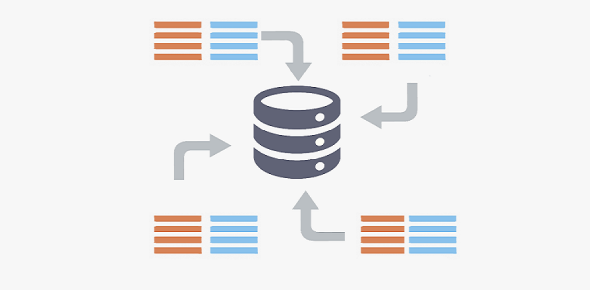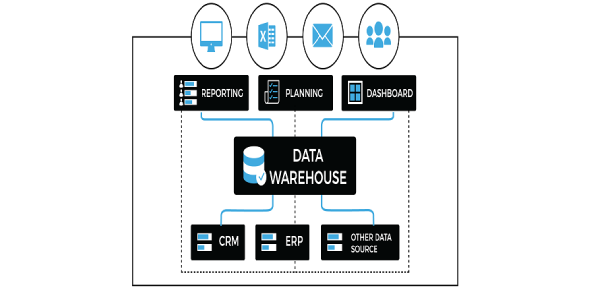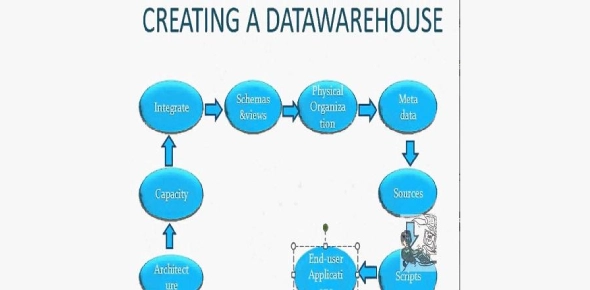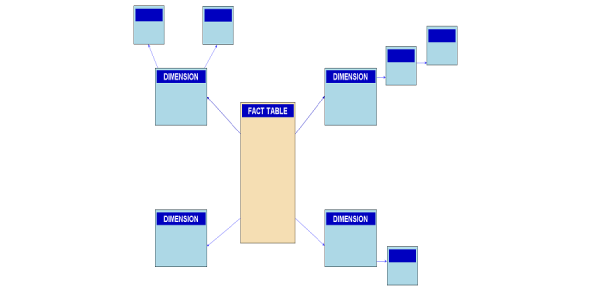Data Warehouse Quiz Questions And Answers
(512).jpg)
How much do you know about data warehouses? Here are some data warehouse quiz questions and answers for you. Check them out. A data warehouse (DW or DWH), also known as an enterprise data warehouse (EDW), is a system that is considered a core component of business intelligence. They store current and historical data in one single place. How much do you know about this topic? Find out by taking this quiz. Best of luck to you.
Data Warehouse Questions and Answers
- 1.
Which small logical units do data warehouses keep large amounts of information in?
- A.
Data Storage
- B.
Data Marts
- C.
Access Layer
- D.
Data Miners
Correct Answer
B. Data MartsExplanation
Data warehouses keep large amounts of information in data marts. Data marts are smaller, specialized databases that are focused on a specific subject area or department within an organization. They are designed to provide quick and easy access to relevant data for analysis and reporting purposes. By organizing data into data marts, data warehouses can efficiently store and retrieve large amounts of information, making it easier for users to access the data they need for decision-making and analysis.Rate this question:
-
- 2.
What does the access layer help users to do?
- A.
Store Data
- B.
Analyse Data
- C.
Clean Data
- D.
Retrieve Data
Correct Answer
D. Retrieve DataExplanation
The access layer helps users to retrieve data. This layer acts as a bridge between the user and the database, allowing users to access and retrieve specific data from the database. It provides a way for users to interact with the data and retrieve the information they need. By separating the retrieval process from the underlying database structure, the access layer simplifies the user's interaction with the database and ensures that only authorized users can access the data.Rate this question:
-
- 3.
What type of data formats do conventional database systems use?
- A.
Highly Denormalized
- B.
Highly Normalized
- C.
A and B
- D.
None of the above
Correct Answer
B. Highly NormalizedExplanation
Conventional database systems use highly normalized data formats. Normalization is a process in database design that reduces data redundancy and improves data integrity by organizing data into separate tables and eliminating duplicate information. Highly normalized data formats ensure that each piece of data is stored in only one place, reducing the chances of inconsistencies and anomalies in the database. This improves the efficiency and reliability of the database system.Rate this question:
-
- 4.
Which of the following does the active data warehouse architecture include?
- A.
At least 1 data mart
- B.
Data that can be extracted from internal and external sources
- C.
Real-time updates
- D.
All of these
Correct Answer
D. All of theseExplanation
The active data warehouse architecture includes all of the mentioned components. It includes at least 1 data mart, which is a subset of the data warehouse that is focused on a specific functional area. It also includes data that can be extracted from both internal and external sources, allowing for a comprehensive and holistic view of the data. Additionally, the active data warehouse architecture supports real-time updates, ensuring that the data is constantly up to date and accurate. Therefore, all of these components are included in the active data warehouse architecture.Rate this question:
-
- 5.
A data warehouse is
- A.
Contains the world's data
- B.
Ready to be updated by the end-users
- C.
Organized around important subject areas
- D.
None of these
Correct Answer
C. Organized around important subject areasExplanation
A data warehouse is organized around important subject areas. This means that the data within the warehouse is structured and categorized based on specific topics or themes. This organization allows for easier analysis and retrieval of information related to a particular subject. It helps in providing a comprehensive view of the data and enables efficient decision-making processes.Rate this question:
-
- 6.
The main purpose of a data warehouse is to research different data.
- A.
True
- B.
False
Correct Answer
B. FalseExplanation
The main purpose of a data warehouse is not to research different data. Instead, a data warehouse is designed to store and organize large amounts of data from various sources, making it easier for businesses to analyze and make informed decisions based on that data. Researching different data is a task that can be performed using the data stored in a data warehouse, but it is not the primary purpose of a data warehouse.Rate this question:
-
- 7.
A data mart is designed for the optimization of the performance for well-defined and predicable uses.
- A.
True
- B.
False
Correct Answer
A. TrueExplanation
A data mart is a subset of a data warehouse that is focused on a specific functional area or department within an organization. It is designed to provide optimized performance for well-defined and predictable uses, such as reporting and analysis. By narrowing the scope and focusing on specific data needs, a data mart can be tailored to meet the requirements of a particular user group or business function, resulting in improved performance and efficiency. Therefore, the statement that a data mart is designed for the optimization of performance for well-defined and predictable uses is true.Rate this question:
-
- 8.
Successful data warehousing needs a formal program in total quality management (TQM) to be implemented.
- A.
True
- B.
False
Correct Answer
A. TrueExplanation
A formal program in total quality management (TQM) is necessary for successful data warehousing because TQM focuses on improving the quality and efficiency of processes. By implementing TQM principles, organizations can ensure that their data warehousing practices are effective, accurate, and reliable. TQM helps in identifying and addressing any potential issues or bottlenecks in the data warehousing process, leading to improved data quality and decision-making. Therefore, it is essential to have a formal TQM program in place to achieve successful data warehousing.Rate this question:
-
- 9.
When are dimensions conformed?
- A.
When they can be compared mathematically
- B.
When they are either the same or one is a subset of another.
- C.
When they have different values
- D.
When they are labeled differently
Correct Answer
B. When they are either the same or one is a subset of another.Explanation
Dimensions are considered conformed when they are either the same or when one dimension is a subset of another. This means that the dimensions can be compared and related to each other in a meaningful way. If the dimensions have different values or are labeled differently, they are not considered conformed because they cannot be compared or related mathematically.Rate this question:
-
- 10.
What is reconciled data?
- A.
Data stored in one operational system
- B.
Data stored in the various operational systems available in the organization
- C.
Current data intended to be the single source for all decision support systems
- D.
Data that has been selected for end-user applications
Correct Answer
C. Current data intended to be the single source for all decision support systemsExplanation
Reconciled data refers to current data that is intended to be the single source for all decision support systems. This means that it is the most up-to-date and accurate information that is used for making informed decisions within an organization. It is different from data stored in one operational system or various operational systems because it is specifically selected and consolidated to ensure consistency and reliability for decision-making purposes. Reconciled data is also distinct from data selected for end-user applications as it is specifically intended for decision support systems rather than general user applications.Rate this question:
-
- 11.
What is the system of Data Warehousing mostly used for?
- A.
Data Integration and Data Mining
- B.
Data Mining and Data Storage
- C.
Reporting and Data Analysis
- D.
Data Cleaning and Data Storage
Correct Answer
C. Reporting and Data AnalysisExplanation
The system of Data Warehousing is mostly used for reporting and data analysis. This involves gathering and storing large amounts of data from various sources, organizing it in a way that is easily accessible and understandable, and then using that data to generate reports and perform data analysis. This allows businesses to make informed decisions and gain valuable insights from their data.Rate this question:
-
- 12.
What is computing in data warehouses often referred to as?
- A.
OLAP
- B.
OLAT
- C.
OLTP
- D.
OLTA
Correct Answer
A. OLAPExplanation
Computing in data warehouses is often referred to as OLAP, which stands for Online Analytical Processing. OLAP involves analyzing large volumes of data to gain insights and make informed decisions. It allows users to perform complex queries, generate reports, and perform data mining tasks. OLAP is specifically designed for data warehousing and provides a multidimensional view of data, enabling users to slice, dice, and drill down into the data for analysis.Rate this question:
-
- 13.
When does data staging occur in data warehousing?
- A.
A periodic process reads data from sources.
- B.
A periodic process stores data gotten from sources.
- C.
A periodic process mines data from sources
- D.
None of the above
Correct Answer
A. A periodic process reads data from sources.Explanation
Data staging in data warehousing refers to the process of extracting data from various sources and transforming it into a format suitable for analysis and storage in a data warehouse. This involves reading data from different sources such as databases, files, or external systems. The extracted data is then cleansed, validated, and transformed before being loaded into the data warehouse. Therefore, the correct answer is "A periodic process reads data from sources."Rate this question:
-
- 14.
What is the combination of facts and dimensions sometimes called?
- A.
Physical Schema
- B.
Star Schema
- C.
Dimension Model
- D.
Denormalizing Modeling
Correct Answer
B. Star SchemaExplanation
A star schema is a combination of facts and dimensions. In a star schema, the facts represent the measurable data, and the dimensions provide context and descriptive information about the facts. The star schema is called so because the diagram of the schema resembles a star, with the fact table at the center and the dimension tables radiating outwards. This design is commonly used in data warehousing and allows for efficient querying and analysis of data.Rate this question:
-
- 15.
What does the typical Extract, Transform, Load (ETL)-based data warehouse use to house its key Functions?
- A.
Staging
- B.
Access Layers
- C.
Data Integration
- D.
All of the above
Correct Answer
D. All of the aboveExplanation
A typical ETL-based data warehouse uses all of the mentioned options - staging, access layers, and data integration - to house its key functions. Staging is used to temporarily store raw data before it is transformed. Access layers provide different levels of access to the data warehouse for various users. Data integration involves combining data from different sources and transforming it into a format suitable for analysis. Therefore, all of these components are essential for the functioning of an ETL-based data warehouse.Rate this question:
-
Quiz Review Timeline +
Our quizzes are rigorously reviewed, monitored and continuously updated by our expert board to maintain accuracy, relevance, and timeliness.
-
Current Version
-
Mar 21, 2024Quiz Edited by
ProProfs Editorial Team
Expert Reviewed by
Godwin Iheuwa -
Dec 09, 2017Quiz Created by
Jaksiboy
 Back to top
Back to top



(498).jpg)


(516).jpg)
(513).jpg)
(519).jpg)
(513).jpg)
(521).jpg)






.webp)